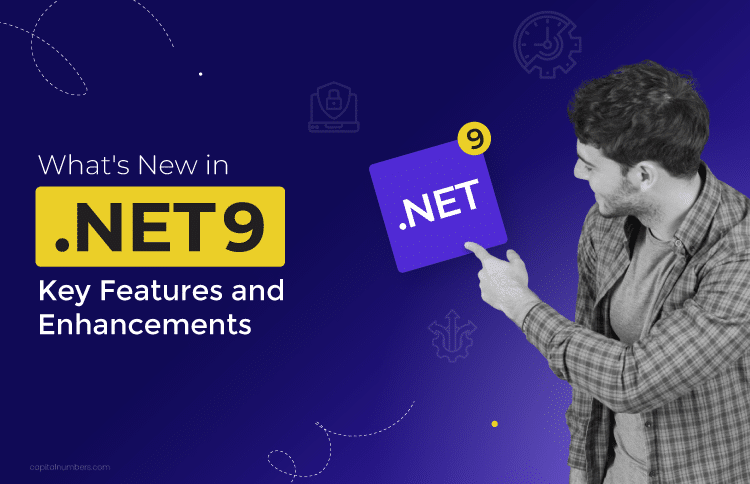How to Choose Your Tech Stack?
Table of Contents
For developers, one of the most significant factors in evaluating a job role is the technology stack that they’ll be using. In a survey conducted by Stack Overflow, 54% of 80000 respondents said that the frameworks, programming languages, and other technologies were the primary criteria for them to accept a job offer.
Having the right technologies in your stack is the best way to help your employees and business grow.
The sooner you think about your tech stacks, the smoother will be your journey down the road. Of course, there’s something beautiful about being small and scrappy, but when you start to grow with time, you suddenly start solving your business problems, not just for tomorrow, but for 8 and 12 months down the line. This is why you need to include powerful and next-level tech stacks across your ecosystem.
We’ve gathered a few insights from our developers that state the key points to consider while choosing the right tech stack:
- Project Type – The type of project is one of the key determinants in choosing your tech stack.
- Small Projects – If your project needs to be delivered within a short timeline and your requirement entails a working prototype, then technologies like WordPress and Drupal are perfect.
- Mid-range Projects – When you build a banking portal or a Government site, then you need programming languages like Python and C# since they offer multiple functionalities and seamless integrations across platforms.
- Complex Projects – If you develop a complex project like an eCommerce marketplace or a social networking site, rely on JS frameworks like React and hosting services like AWS that support huge processing loads. Go for a web stack that reduces latency and makes your app responsive.
- Team’s Expertise and Knowledge – Developers lacking relevant industry knowledge may trudge along with issues while writing codes. The solution is to find a web stack that your team can handle. An easy-to-understand tech stack, having an intuitive design, vast developer community, and rich documentation, can help in this case. Certain technologies even call for Test Driven Development (TDD), where developers test first and code later. If your developers are experienced enough to deal with the TDD approach, it is even better. This approach helps in stepping up the project quality and speeding up the process.
- Time to Market (TTM) – Releasing a product on time is a challenge. If done successfully, it garners a huge appreciation from clients. But what’s the best way to achieve that? Well, to deliver a project on time, you need a stack that offers multiple functionalities to an app. For example, Ruby on Rails, with its excellent open source libraries, is great for reducing TTM. If your project needs third-party solutions, then pick a stack that offers seamless integrations. A team of skilled developers working on robust tech stacks can help influence your TTM and release your product (with no bugs) on time.
- Scalability – After you roll out your product in the market, your users start to grow. Make sure that your app can handle this growth spurt. For this, you should pick a tech stack that helps your app scale, both horizontally and vertically. Horizontal scaling means running the app on multiple servers to handle the traffic influx. Vertical scaling refers to adding programs to process data. It’s essential to scale your app both ways to keep a product collapse at bay. While selecting your web stack, consider releasing an MVP initially to get a quick audience response, and then scale accordingly for the best results.
- Maintainability – If the code is too complicated, it takes too long for your developers to process it. If it is too concise, then debugging is an issue. The best way to avoid such situations is to choose a programming language that is easy to code, maintain, and reuse. This saves you from unnecessary hassles of code maintenance and fixes.
- Cost of Development – Many open-source technologies give you access to advanced features for free. You can use these if you want to keep your costs low. However, if the budget isn’t an issue for you, choose a web stack that requires you to pay a certain fee to access cutting edge tools. Picking your stack largely depends on your willingness to spend on a specific project.
- Security – Is the web stack you’re selecting the most secure it can be? Does the stack update its security protocols at regular intervals? These are questions you must ask yourself before zeroing down to a tech stack. Choose stacks that deliver sophisticated authentication and authorization methods. Make sure that the code fabric leaves no stray points of entry for hackers.
Industry-ready Solutions
In this rapidly evolving world of tech, it would be foolish not to use industry-ready tech stacks such as the following:
| MEAN | MERN | LAMP |
| A set of JavaScript technologies, MEAN stack is great for building complex and high-performing apps. MEAN components speak JSON that ensures uninterrupted data flow between layers. This open-source stack includes MongoDB, Express, AngularJS, and Node.js. | MERN stack covers the full development from client to server, precisely like MEAN. The stack includes MongoDB, Express, React/Redux, and Node.js. The combination of ReactJS and NodeJS for improving the front-end and back-end, respectively, is perfect for creating eCommerce sites. | LAMP stack combines Linux, Apache, MySQL database and PHP. Known for its adaptability and security, LAMP stack is open source that facilitates reduced development costs and maximized efficiency. It is customizable, easy-to-use and works wonderfully well with dynamic websites and apps. |
Tech Stacks Behind Global Brands
If you’re a startup, you probably need more time to choose and fine-tune your tech stack and optimize it as you grow. However, if you’re an enterprise, you need to make wiser choices, in terms of picking and scaling your technologies.
Some of the tech stacks that popular brands swear by are:
| Spotify | Airbnb | Shopify | |
|
|
|
|
Don’t Forget to Strategize While You Tech Up
As your company grows, it’s tempting to pick your technologies that support your processes. Usually, your developers adopt stacks with immense potential, and accordingly, they mold their systems around it. But, what truly sets you apart from others is the way you execute those powerful tech stacks. A good strategy allows you to think carefully about your tools, the business purpose they solve, and any duplication of tools used.
To Summarize
With multiple technology stacks available today, there’s no point using time-consuming, clunky, and over-priced legacy tools. Never settle for anything less than what your business and developers need. Abandon ugly stacks. Pick up the ones that combine ease-of-use, power, and value-for-money.
Remember, when you focus more on creating incredible user experiences than managing your tools, your business grows.
So, stack up the best stacks that genuinely make a difference.















